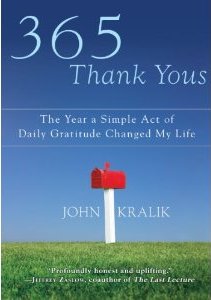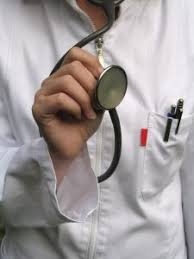March 10th, 2011 by Shantanu Nundy, M.D. in Health Tips, Research
1 Comment »

What is the leading cause of death in the United States? Heart disease? Cancer? No, it’s smoking. Smoking? Yes, depending on how you ask the question.
In the early 90s, McGinnis and Foege turned the age-old question of what people die of on its head by asking not what diseases people die of but rather what the causes of these are. Instead of chalking up the death of an older man to say lung cancer, they sought to understand the proximate cause of death, which in the case of lung cancer is largely smoking. Using published data, the researchers performed a simple but profound calculation — they multiplied the mortality rates of leading diseases by the cause-attributable fraction, that proportion of a disease that can be attributed to a particular cause (for example, in lung cancer 90 percent of deaths in men and 80 percent of deaths in women are attributable to smoking). Published in JAMA in 1993, their landmark study became a call to action for the public health community.
When looked at the conventional way, using data from the 2004 update of the original study, heart disease, cancer, and stroke are the leading causes of death, respectively. This accounting may help us understand the nation’s burden of illness, but does little to tell us how to prevent these diseases and improve health. Through the lens of McGinnis and Foege we get the actual causes of death (e.g., the major external modifiable factors that contribute to death). This analysis shows that the number one cause of death in America is tobacco use, followed closely by poor diet and lack of physical activity, and then alcohol consumption. Read more »
*This blog post was originally published at BeyondApples.Org*
February 25th, 2011 by admin in Book Reviews, True Stories
No Comments »


This is a guest post by Dr. John Schumann.
**********
I just read the book “365 Thank Yous” by John Kralik. I heard an interview with the author on NPR and it caught my attention.
Kralik had been down on his luck in 2007: Divorced twice, overweight, with a struggling law firm that he’d started, he was also failing in a new romantic relationship. He was worried about losing his seven-year-old daughter, too, in a custody dispute.
He made a momentous decision: Instead of feeling sorry for himself (easy to do given his predicaments), he decided to be grateful for what he had. To show it, he vowed to write a thank-you note every day for the next year. What do you think happened?
His life changed for the better. His relationship improved. His clients started paying their bills and his firm’s financial footing solidified. His health improved. He eventually achieved his lifelong dream of becoming a judge. To top it off, he turned his personal quest into a writing project. Within minutes of writing a book proposal, he received responses from agents who hoped to shepherd his project. Every writer’s dream.
I’ll grant you that it sounds hokey. But there are a couple of things the book demonstrated to me. Read more »
*This blog post was originally published at ACP Internist*
February 24th, 2011 by Linda Burke-Galloway, M.D. in Health Tips, Research
No Comments »

 Birth defects, particularly those of the blood vessels, account for the majority of infant deaths, especially after the first week of life. Congenital heart disease (CHD) — meaning defects of the heart — is responsible for one-third of deaths between birth and the first year of life. Therefore, the diagnosis of CHD is critical in order to plan life-saving treatments, such as the proper place for the delivery, the type of delivery, and its timing. If it’s known in advance that an unborn baby has a heart problem and is delivered in a hospital that provides special care, its survival and future health will increase dramatically.
Birth defects, particularly those of the blood vessels, account for the majority of infant deaths, especially after the first week of life. Congenital heart disease (CHD) — meaning defects of the heart — is responsible for one-third of deaths between birth and the first year of life. Therefore, the diagnosis of CHD is critical in order to plan life-saving treatments, such as the proper place for the delivery, the type of delivery, and its timing. If it’s known in advance that an unborn baby has a heart problem and is delivered in a hospital that provides special care, its survival and future health will increase dramatically.
Who’s at risk for having CHD and which expectant moms should have further evaluation? Families who have a history of CHD — especially mothers, fathers, and siblings — should receive genetic counseling. Multiple medical studies over the past fifteen years have demonstrated the significance of genetics as a main culprit of CHD. Parents of a child with CHD have a two percent to three percent chance of having another affected child. If a mother or father has CHD, a fetal cardiac echo (an ultrasound of the heart) is definitely warranted.
Because the treatment of CHD in many cases is surgical, there’s an increasing number of patients who have survived into adulthood and have ultimately become parents. Research has documented that 4.1 percent of their children will have CHD. Children with mothers who have CHD are at a greater risk of inheriting the disease than if they have fathers with CHD. Mothers with cyanotic heart disease — that is, blood that is without oxygen that bypasses the lungs and goes directly to the blood vessels — also have a greater risk of having a baby with CHD. Read more »
*This blog post was originally published at Dr. Linda Burke-Galloway*
February 23rd, 2011 by KevinMD in Health Policy, Opinion
No Comments »

There are plenty of reasons why medical students aren’t choosing primary care as careers. Lack of role models. Perception of professional dissatisfaction. High burnout rate among generalist doctors. Long, uncontrollable hours.
But what about salary? Until now, the wage disparity between primary care doctors and specialists has only been an assumed reason; the evidence was largely circumstantial. After all, the average medical school debt exceeds $160,000, so why not go into a specialty that pays several times more, with better hours?
Thanks to Robert Centor, there’s a study published in Medscape that shows how money affects career choice among medical students. Here’s what they found:
Sixty-six percent of students did not apply for a primary care residency. Of these, 30 percent would have applied for primary care if they had been given a median bonus of $27,500 before and after residency. Forty-one percent of students would have considered applying for primary care for a median military annual salary after residency of $175,000.
And in conclusion:
U.S. medical students, particularly those considering primary care but selecting controllable lifestyle specialties, are more likely to consider applying for a primary care specialty if provided a financial incentive.
Money matters. There should be no shame for new doctors to admit that. After all, they’re human too, and respond to financial incentives just like anyone else. And when most medical students graduate with mortgage-sized school loans, salary should be a factor when considering a career. Read more »
*This blog post was originally published at KevinMD.com*
February 21st, 2011 by Toni Brayer, M.D. in Health Tips, Opinion
No Comments »

 “But doc, my blood pressure is always normal at home.” I wish I had a dollar for every time I have heard that line and I know it is true. When some patients come to see me, their blood pressure is abnormally high (above 130/90). This is known as “white-coat hypertension.” Although it has been thought to be from anxiety about seeing the doctor, even long-established patients who have no conscious anxiety can exhibit elevated blood pressure in the office.
“But doc, my blood pressure is always normal at home.” I wish I had a dollar for every time I have heard that line and I know it is true. When some patients come to see me, their blood pressure is abnormally high (above 130/90). This is known as “white-coat hypertension.” Although it has been thought to be from anxiety about seeing the doctor, even long-established patients who have no conscious anxiety can exhibit elevated blood pressure in the office.
Because blood pressure naturally fluctuates and the office visit is not a “normal” setting, it is important for patients who have high blood pressure (hypertension) to have their own blood pressure cuff at home. Now that devices are automated and easy to use, everyone with hypertension should be monitoring their blood pressure in the comfort of their own home. I advise multiple readings over a week at different times of day. Get a reading when resting and when rushing around. Take your blood pressure after you exercise and after a meal. It is important to keep a log and write it down. Only then can we see patterns and know if the blood pressure is controlled or not.
Blood pressure readings in the doctors office are not necessarily the most accurate. Patients are often rushed trying to get parked and in on time. Medical assistants can use the wrong size cuff or not position the arm correctly. Listening (auscultation) is not very accurate due to human error. It is the multiple readings over time that give a more accurate picture of blood pressure control.
High blood pressure in the office can be true hypertension or it can be white-coat hypertension that is usually controlled at home. If a patient is on blood pressure medication and has controlled blood pressure at home, I will not add more medication just because they are elevated in the office. If a patient has not been diagnosed with hypertension and his or her blood pressure is elevated in the office, he or she is advised to get their own blood pressure cuff for at home and return with readings for us to review. This way we can minimize unnecessary and expensive medication and make sure we are protecting the patient as well.
*This blog post was originally published at EverythingHealth*

















